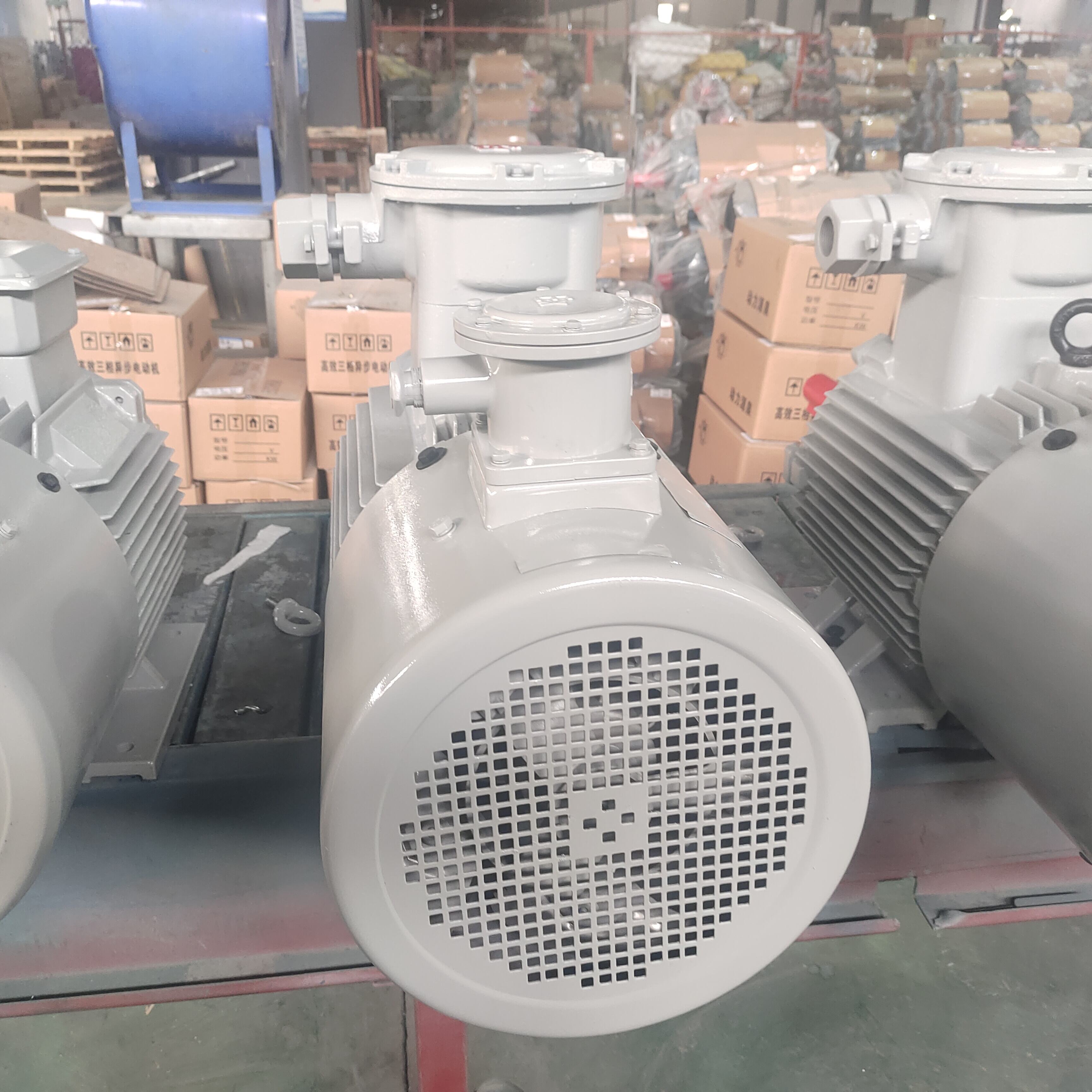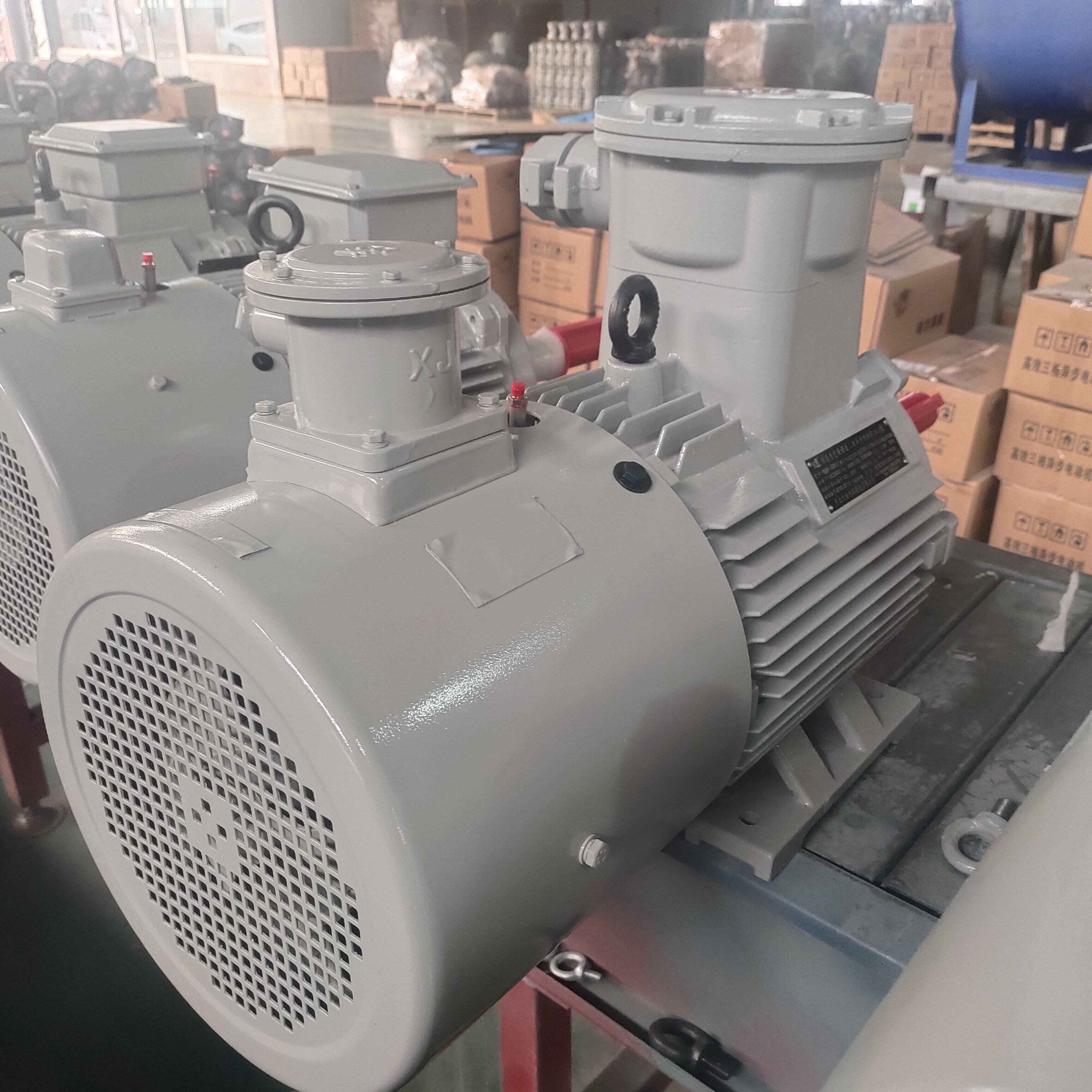How Variable Frequency Motors Improve Machine Performance
Introduction to Variable Frequency Motors
The industrial sector has always relied heavily on electric motors to power machinery, drive production systems, and support critical processes. Traditional fixed-speed motors, while dependable, are often limited by their inability to adapt to fluctuating demands. This results in wasted energy, reduced efficiency, and unnecessary wear on equipment. The development of Variable Frequency Motors has brought about a revolutionary shift, enabling machines to operate with greater flexibility, improved efficiency, and enhanced performance. By adjusting the supply frequency and voltage, Variable Frequency Motors allow precise control over motor speed and torque, giving operators the ability to tailor motor output to real-time application needs.
Principles of Variable Frequency Motors
The Role of Frequency in Motor Speed
The speed of an electric motor is directly related to the frequency of the electrical supply. In conventional systems, the frequency is fixed, typically at 50 Hz or 60 Hz, which means the motor runs at a constant speed. Variable Frequency Motors, powered by variable frequency drives (VFDs), change the supply frequency to control the motor’s speed. This flexibility enables them to match motor output more closely to operational requirements.
Torque and Efficiency Control
By varying both frequency and voltage, Variable Frequency Motors maintain a balance between speed and torque. This ensures that machines receive the power they need without excess, significantly improving operational efficiency.
Improving Machine Performance with Variable Frequency Motors
Energy Optimization
One of the most impactful ways Variable Frequency Motors enhance performance is through energy savings. Machines rarely operate at maximum load continuously. With the ability to adjust motor speed, energy use is aligned with real-time demand, reducing consumption by as much as 30–50 percent in applications such as pumps, fans, and compressors. Lower energy use directly improves the overall performance-to-cost ratio of the machine.
Smooth Starting and Stopping
Traditional motors experience high inrush currents during startup, which can strain electrical systems and mechanical components. Variable Frequency Motors provide soft starting and controlled stopping by gradually ramping speed up or down. This reduces mechanical stress, minimizes downtime, and extends the lifespan of connected equipment.

Enhanced Precision and Control
Machines that rely on precise speed and torque control, such as CNC equipment, textile machinery, and packaging lines, benefit significantly from Variable Frequency Motors. Operators can fine-tune performance to exact requirements, ensuring higher accuracy and consistency in production output.
Reduced Wear and Maintenance
Because Variable Frequency Motors adapt to load requirements, they reduce unnecessary strain on bearings, belts, and other moving parts. This results in fewer breakdowns, lower maintenance costs, and longer service intervals. The improved reliability enhances machine availability, an important factor in industries where downtime is costly.
Adaptability to Fluctuating Loads
Machines often face variable loads depending on the process or product flow. Variable Frequency Motors dynamically adjust to these fluctuations, maintaining smooth operation without sudden shocks or overloads. This adaptability keeps machines running efficiently and reduces risks of failure under changing conditions.
Applications in Different Industries
Manufacturing and Production Lines
Manufacturing plants use a wide range of machinery with diverse operational demands. Variable Frequency Motors optimize performance by adjusting conveyor speeds, controlling robotic movements, and ensuring synchronization across production stages. This enhances efficiency, product quality, and throughput.
HVAC Systems
In heating, ventilation, and air conditioning, airflow and temperature demands fluctuate constantly. Variable Frequency Motors regulate fan and pump speeds to deliver consistent comfort while cutting energy costs. This not only improves system performance but also reduces operational expenses for building owners.
Water and Wastewater Management
Pumps in treatment facilities must handle variable water flow conditions. Variable Frequency Motors allow precise control of pump speeds, ensuring consistent performance while minimizing energy use and mechanical stress.
Oil, Gas, and Mining
In heavy industries, machines often operate under demanding conditions. Variable Frequency Motors provide robust torque control and adaptability, allowing equipment such as drills, conveyors, and crushers to maintain high performance even under fluctuating loads.
Agriculture
Agricultural machinery, including irrigation systems and automated feeding equipment, requires adaptable operation. Variable Frequency Motors optimize water pumping and mechanical handling to improve resource use and productivity.
Technical Features That Enhance Performance
Regenerative Braking
Some Variable Frequency Motors offer regenerative braking, where excess energy during deceleration is fed back into the system. This improves energy efficiency and enhances performance in high-inertia applications such as elevators or cranes.
Programmable Logic
Modern Variable Frequency Motors allow operators to set customized speed ranges, acceleration profiles, and safety limits. This level of programmability ensures that machine performance is aligned with operational goals.
Advanced Monitoring Capabilities
Integration with sensors and monitoring systems enables real-time feedback on performance, temperature, vibration, and energy use. This data-driven approach supports predictive maintenance and ensures machines run at peak efficiency.
Challenges in Implementation
Initial Investment
The upfront cost of Variable Frequency Motors and VFDs is higher compared to traditional motors. However, the long-term energy savings and performance benefits typically offset this expense.
Harmonic Distortion
VFDs can introduce harmonics into electrical systems, affecting power quality. Solutions such as harmonic filters or advanced drive designs mitigate this issue.
Integration Complexity
Integrating Variable Frequency Motors into legacy systems may require modifications in wiring, controls, or cooling systems. Proper planning and engineering are necessary to achieve optimal performance.
Future Trends in Variable Frequency Motors
As industries embrace automation and sustainability, Variable Frequency Motors are evolving with smarter technologies. Integration with IoT platforms allows remote monitoring and control, while advances in semiconductor technology are producing more compact and efficient drives. Additionally, as renewable energy use expands, Variable Frequency Motors are being integrated into wind and solar applications to handle fluctuating power inputs and maintain stable performance.
Conclusion
Variable Frequency Motors are a transformative solution for improving machine performance across industries. By optimizing energy use, providing smooth startups, enhancing precision, and reducing wear, they significantly boost both efficiency and reliability. While challenges such as higher upfront costs and integration complexity exist, the long-term benefits in energy savings, reduced downtime, and improved process control make them a valuable investment. As technology advances and industries move toward smarter and more sustainable operations, Variable Frequency Motors will continue to play a vital role in delivering high-performance, adaptable, and efficient machine operations.
FAQ
How do Variable Frequency Motors save energy?
They adjust motor speed to match load demands, reducing unnecessary power consumption in applications like pumps and fans.
What is soft starting in Variable Frequency Motors?
It refers to gradually ramping up motor speed during startup to reduce electrical inrush and mechanical stress.
Can Variable Frequency Motors improve machine precision?
Yes, they allow fine-tuned control over speed and torque, making them ideal for applications requiring high accuracy.
Do Variable Frequency Motors reduce maintenance costs?
Yes, by reducing wear on mechanical components and operating smoothly under variable loads, they lower maintenance needs.
Which industries benefit most from Variable Frequency Motors?
Industries such as manufacturing, HVAC, water management, oil and gas, mining, and agriculture benefit significantly.
What challenges are associated with using Variable Frequency Motors?
The main challenges include higher upfront costs, integration complexity, and potential power quality issues due to harmonics.
Do Variable Frequency Motors support predictive maintenance?
Yes, modern systems integrate with sensors and monitoring tools to provide real-time performance data for predictive maintenance.
Can Variable Frequency Motors handle fluctuating loads?
Yes, they are specifically designed to adapt to load changes without causing mechanical stress or performance issues.
How do they enhance equipment lifespan?
By reducing sudden shocks, controlling torque, and minimizing unnecessary wear, they extend the lifespan of both motors and connected equipment.
What is the future of Variable Frequency Motors?
The future includes smarter IoT integration, compact high-efficiency drives, and broader use in renewable energy and sustainable systems.
Table of Contents
- How Variable Frequency Motors Improve Machine Performance
- Introduction to Variable Frequency Motors
- Principles of Variable Frequency Motors
- Improving Machine Performance with Variable Frequency Motors
- Applications in Different Industries
- Technical Features That Enhance Performance
- Challenges in Implementation
- Future Trends in Variable Frequency Motors
- Conclusion
-
FAQ
- How do Variable Frequency Motors save energy?
- What is soft starting in Variable Frequency Motors?
- Can Variable Frequency Motors improve machine precision?
- Do Variable Frequency Motors reduce maintenance costs?
- Which industries benefit most from Variable Frequency Motors?
- What challenges are associated with using Variable Frequency Motors?
- Do Variable Frequency Motors support predictive maintenance?
- Can Variable Frequency Motors handle fluctuating loads?
- How do they enhance equipment lifespan?
- What is the future of Variable Frequency Motors?


